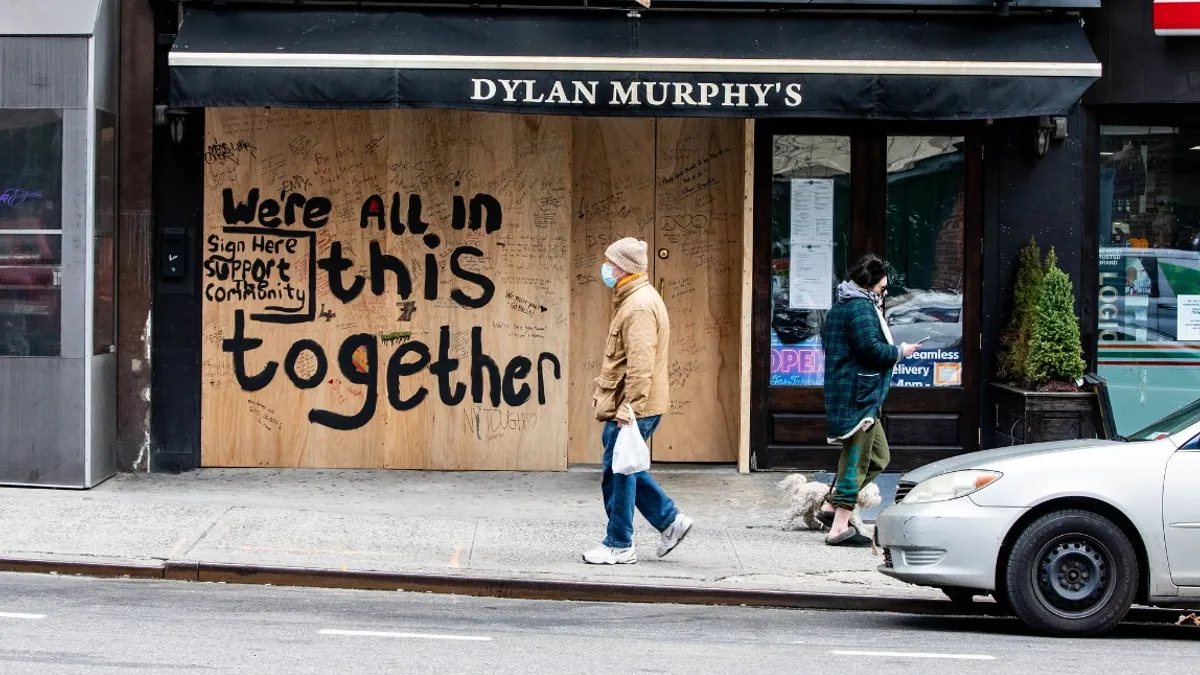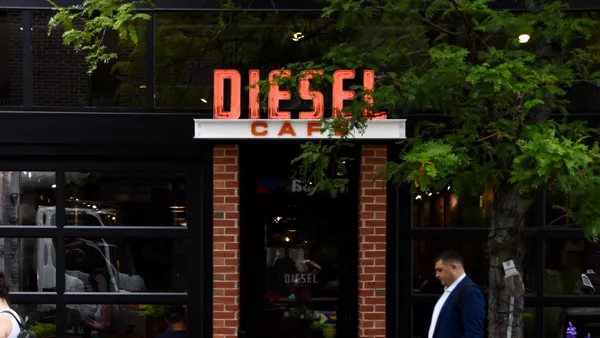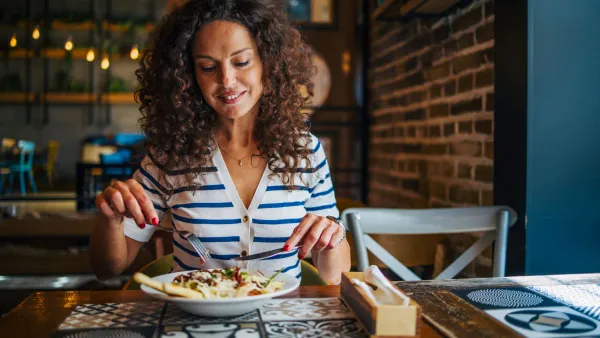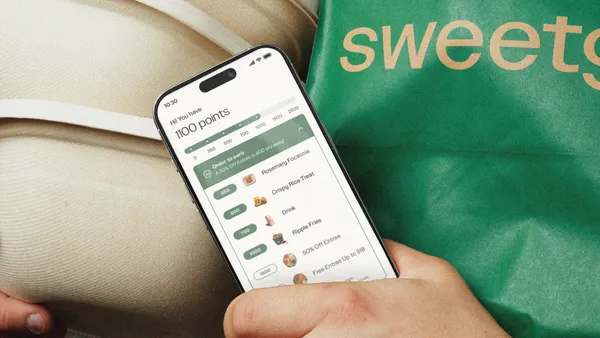Making accurate market predictions can be difficult without a crystal ball, but nothing could have prepared us for the devastating impact a pandemic would have on the restaurant industry in 2020 — a catastrophe some experts worry will have aftershocks into 2025.
As this unprecedented year comes to a close, we wanted to take a moment to look back at the trend projections we made at the start of the year and compare it to what actually happened. Some predictions were totally off, while others panned out for unexpected reasons.
1. Lifestyle campaigns and LTOs will be key to marketing
Expectations:
-
QSRs will invest in wacky, Instagrammable merchandise to secure “lifestyle brand” status and deepen loyalty with frequent diners.
-
Branded merchandise will help fast food chains cater to dine demand for experience, since the limited-service model can’t provide the same level of dining room ambiance as fast casual and casual chains.
-
Specialty LTOs are a way for chains to engage in food fads at low cost because they don’t permanently alter the menu.
-
LTOs will help QSRs differentiate from competitors and ensure strong customer retention.
-
LTOs will also drive visitation to fast food chains and increase frequency of visits.
Reality:
-
Restaurants invested heavily in campaigns on emerging social networks like TikTok and Twitch to digitally connect with diners and cement their reputations as lifestyle brands.
-
Examples: Wendy’s partnered with Uber Eats to launch customized menus for Twitch gamers; Dunkin’ drove its TikTok follower base by offering branded onesies if it surpassed 2 million followers; Chipotle teamed with YouTuber David Dobrick to launch a viral TikTok challenge and Arby’s created an LTO based off a viral TikTok about its brand; Resy and American Express created a fine-dining “drive thru” in Los Angeles.
-
-
Restaurants found creative ways to engage with their fans virtually or at a distance to deliver brand experience amid dining room restrictions and closures.
-
Examples: Panera partnered with Pepsi to launch a social media sweepstakes where participants can win a virtual pizza party; Wendy’s created a drive-thru Halloween experience called a “Scare-Thru” at a Los Angeles restaurant.
-
-
Celebrity-backed LTOs drove significant sales lifts and created a sense of excitement around QSRs.
-
Examples: McDonald’s Travis Scott and J Balvin specialty meals; Chipotle’s Tony Hawk Burrito and Dunkin’s “The Charli” coffee drink named after TikTok star Charli D'Amelio
-
-
The success of the Chicken Sandwich Wars of 2019 continued to drive LTO menu innovation, resulting in high-profile spicy poultry menu item launches that quickly sold out.
-
Examples: McDonald’s ran out of its Spicy Chicken McNuggets just weeks after the LTO launched in September; Wendy’s brought back its spicy chicken nuggets LTO after calls for its return on social media.
-
2. Menus will shrink and simplify
Expectations:
-
Restaurants, especially QSRs, will streamline menu offerings to reduce their reliance on labor.
-
Menu simplification will help restaurants improve speed of service.
-
Plant-based specialty items will remain “star players” on restaurant menus to keep chains on trend.
Reality:
-
Restaurants trimmed menus to cut costs and support beleaguered operators as sales dropped amid pandemic pressure.
-
Examples: McDonald’s ended its all-day breakfast offering this spring and its operators have urged corporate to make these reductions permanent in a post-pandemic environment; Taco Bell cut a dozen menu items this summer.
-
-
Menu reductions helped improve drive-thru times, which has been a key differentiator for QSRs who have benefited from the off-premise channel during dining room closures.
-
Examples: McDonald’s and Taco Bell improved their drive-thru times by 30 seconds and 9 seconds, respectively.
-
3. Ghost restaurants will mature
Expectations:
-
Ghost kitchens will expand and more restaurants will seek out partnerships with these concepts to grow their delivery channels without disrupting in-store operations.
-
Ghost kitchens will allow restaurants to expand into new markets at lower cost than traditional brick-and-mortar outposts.
-
Third-party delivery providers and restaurant chains will continue to launch their own ghost kitchen concepts.
Reality:
-
Major ghost kitchen providers received serious attention from private equity investors and other financial backers in early 2020, a trend that was accelerated by diner demand for delivery.
-
Examples: Kitopi raised $60 million in funding in February; Virtual Kitchen raised $20 million in September; Reef Technology secured $700 million in funding in November; $5.5 billion has been invested in ghost kitchens over the last 12 months, ending in October.
-
-
Major restaurant chains partnered with ghost kitchen providers to expand.
-
Examples: Fat Brands teamed with Epic Kitchens to launch 19 ghost kitchen outposts; a Famous Dave’s franchisee partnered with Cloud Kitchens.
-
-
Major restaurant chains launched their own ghost kitchen outposts and virtual brands.
-
Examples: Famous Dave’s signed a development deal with Bluestone Hospitality to expand via Famous Dave’s ghost kitchens and co-branded Johnny Carino’s restaurants; Fat Brands will grow newly acquired Johnny Rockets through ghost kitchens at other existing physical restaurant locations; Brinker International launched Its Just Wings virtual brand this summer and expects it to be worth $150 million in its first year; Bloomin’ Brand expanded a test of its Tender Shack virtual brand; Wow Bao opened ghost kitchens in 100 partner restaurants.
-
-
Independent restaurants struggling to keep the lights on found a new survival opportunity in ghost kitchen partnerships.
-
Analysts predict the pandemic’s acceleration of ghost kitchen expansion and of restaurant engagement with this channel will grow the segment into a $1 trillion market by 2030.
4. Micro chains will be flavor trendsetters
Expectations:
-
Chef-driven full-service and QSR concepts will increase their operator spend and attract investors that will help them better compete with established chains.
-
Successful chains are likely to offer bold, ethnic flavors and value sustainability through plant-based packaging or cutlery and plant-based menu items.
Reality:
-
Micro chains struggled to stay afloat as larger, more established chains with drive-thrus reaped the benefits of consumer demand for value-focused off-premise experiences.
-
Examples: By Chloe, the trendy plant-based fast casual chain with 14 units, declared bankruptcy in December and is marketing itself to be sold; Eatertainment leader Punch Bowl Social declared bankruptcy in December despite receiving roughly $10 million in Paycheck Protection Program loans.
-
5. Gen Z is gaining more influence
Expectations:
-
Gen Z’s preference for fast casual chains and ethnic flavors will shape restaurant menu offerings.
-
The generation’s demand for speedy visits, convenience and food on-the-go will push restaurants to launch more digital and delivery offerings.
-
Gen Z’s influence will grow as they age into higher spending power.
-
Balancing this consumer group’s interest in in-store experiences and strong “authentic” brand values rooted in social responsibility with digital technology spending will be one of the biggest challenges of 2020.
Reality:
-
Gen Z’s most-loved brands are in the food and beverage category, but the consumer group’s love and awareness scores are lower than every other generation, making their loyalty difficult to capture.
-
Gen Z demanded fun and exciting advertising to break up pandemic boredom, and restaurant brands delivered with creative and quirky marketing campaigns.
-
Examples: KFC created a steamy 15-minute Lifetime movie starring Mario Lopez as Colonel Sanders; McDonald’s launched mock insurance on its app to promote its spicy McNuggets; Chipotle partnered with a TikTok creator house to promote a new group-ordering feature.
-
-
Seventy-two percent of Gen Z consumers said they are more likely to buy from a company that contributes to social causes, which may have informed restaurant brands’ decisions to vocally support Black Lives Matter this summer and voting initiatives this fall .















